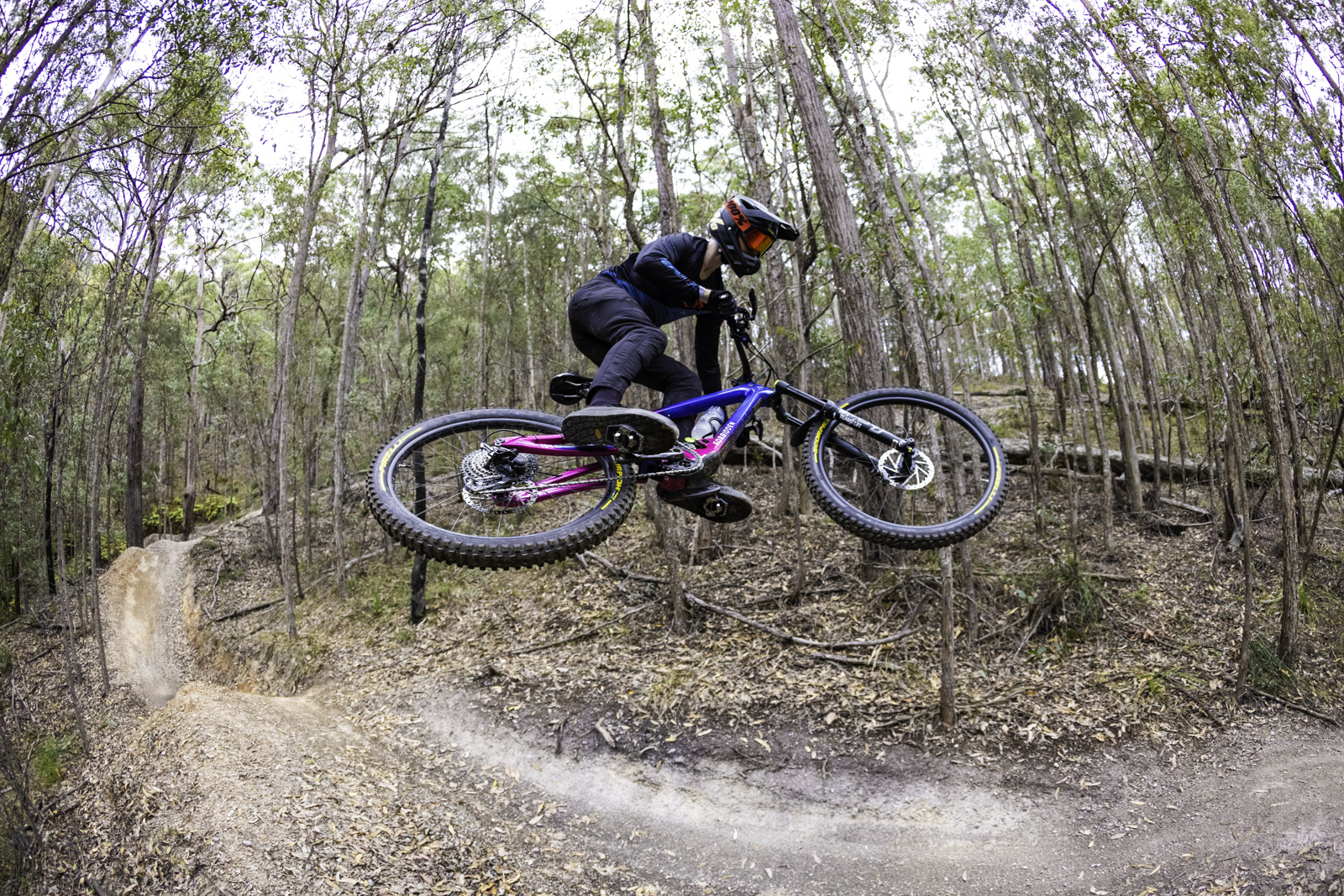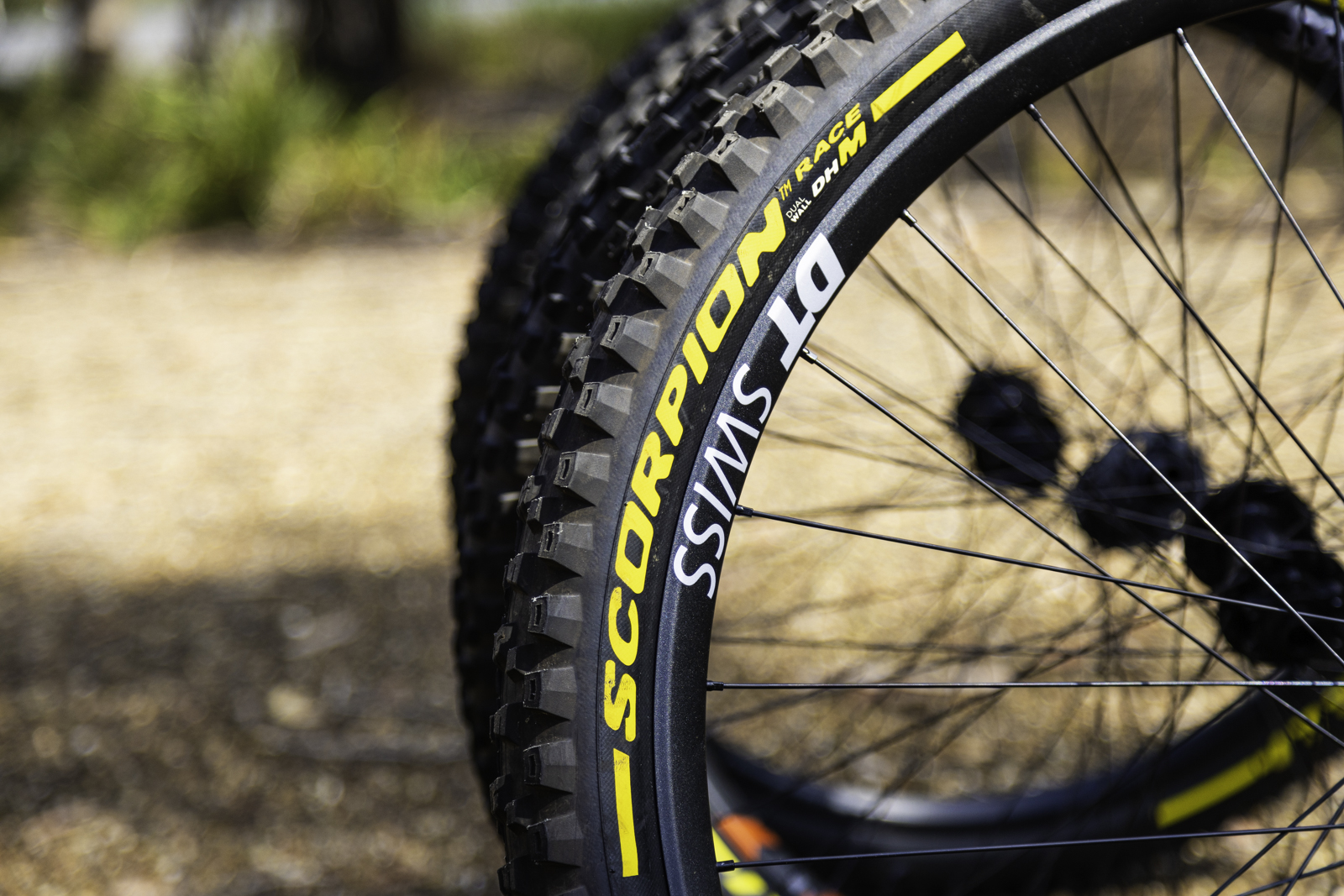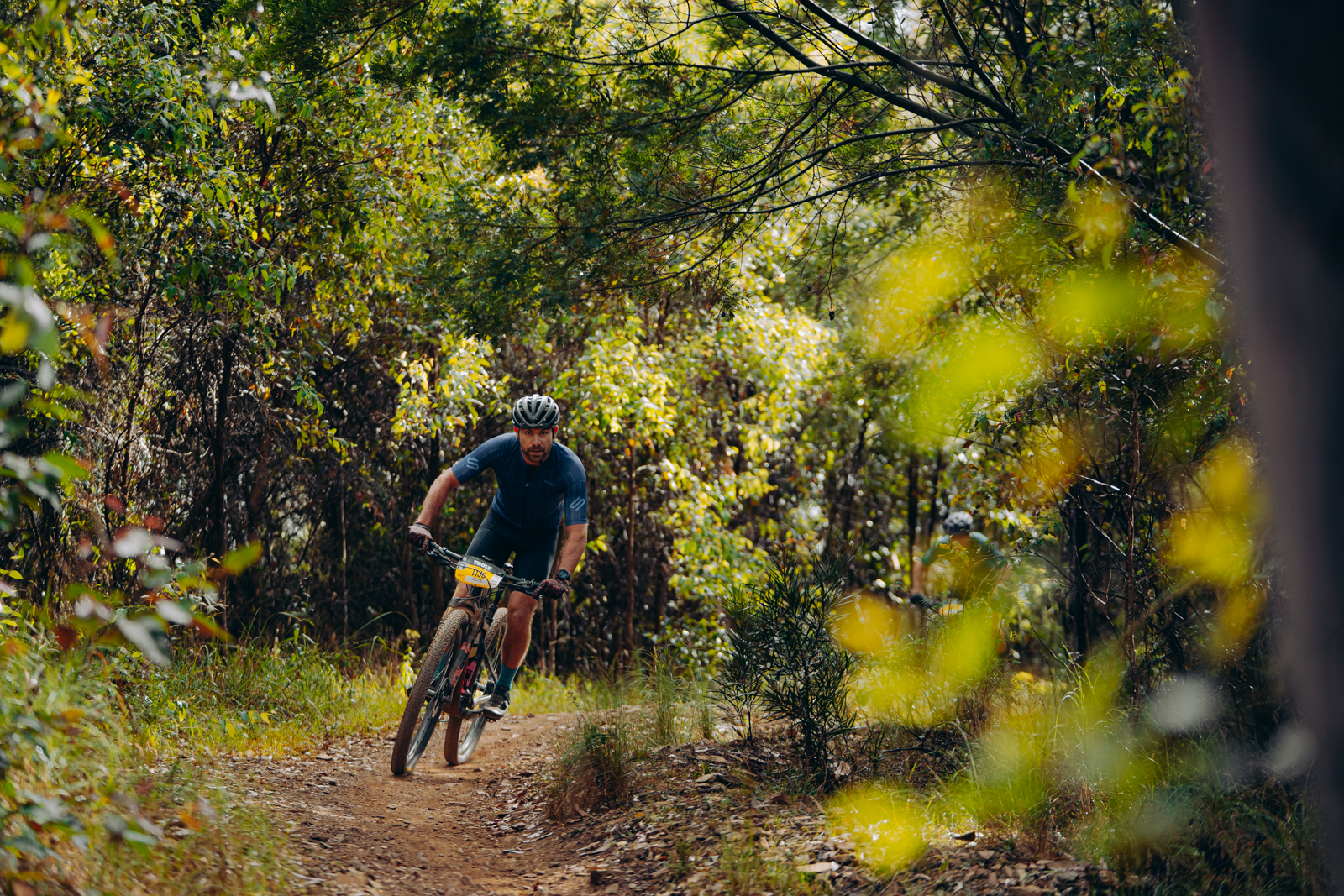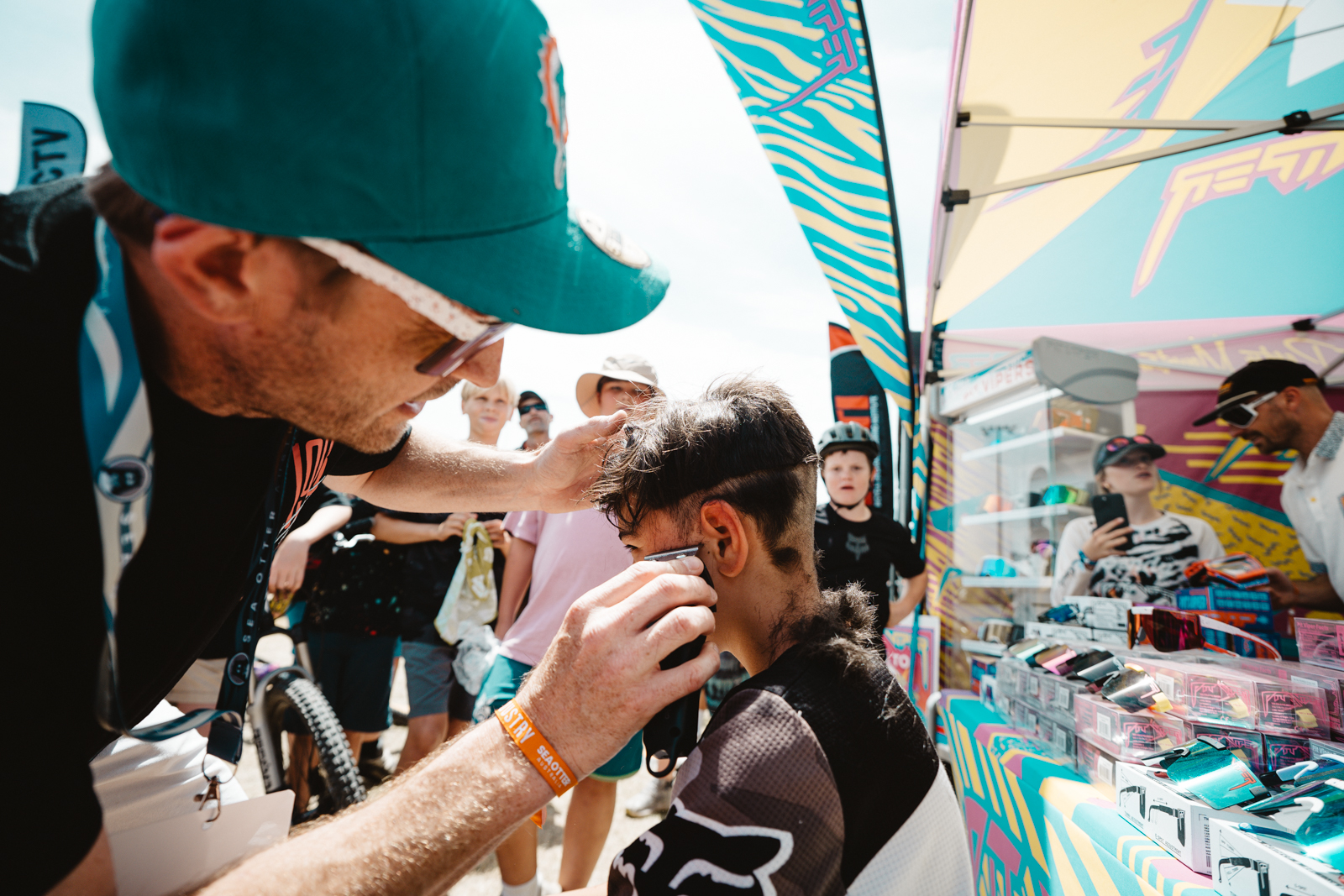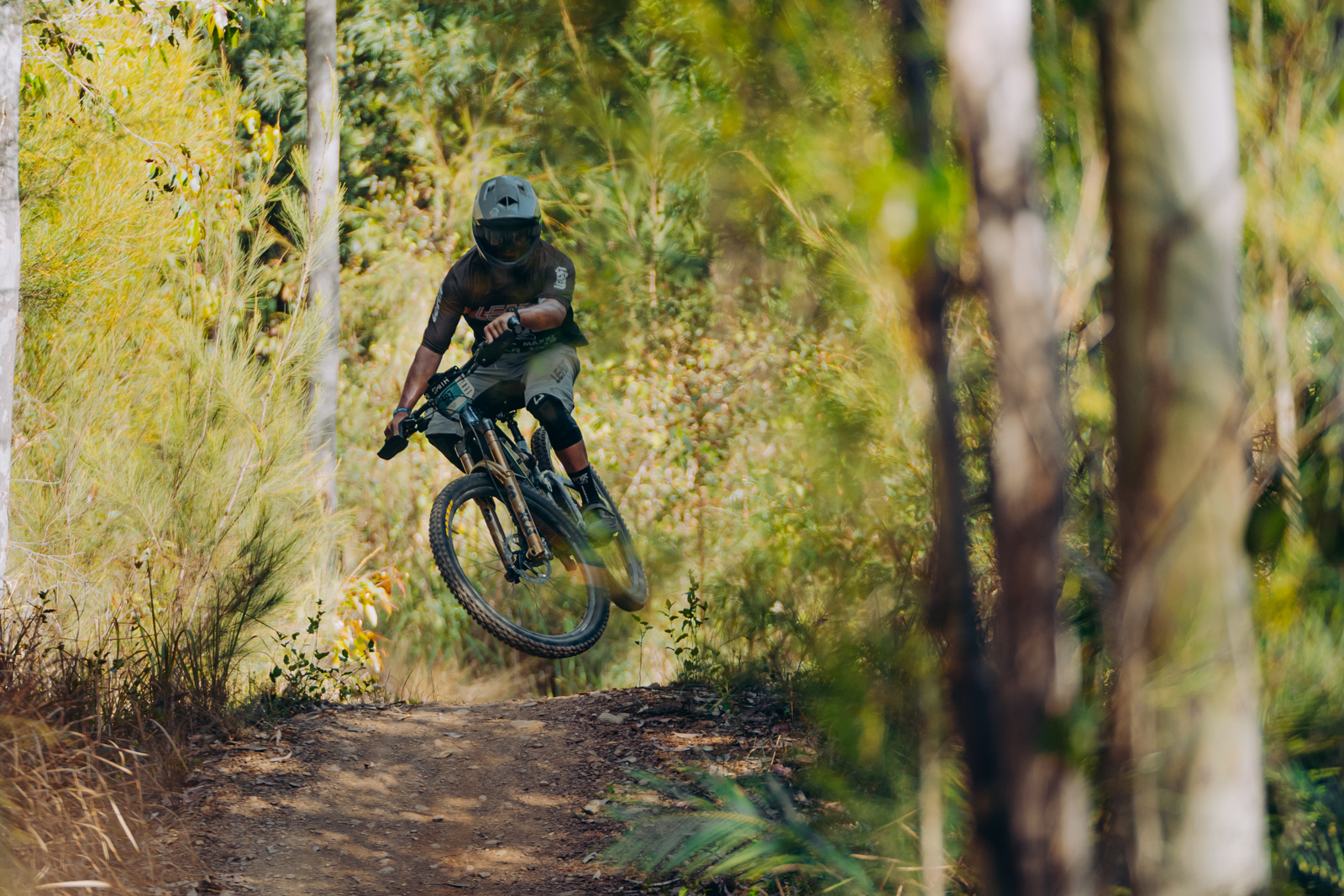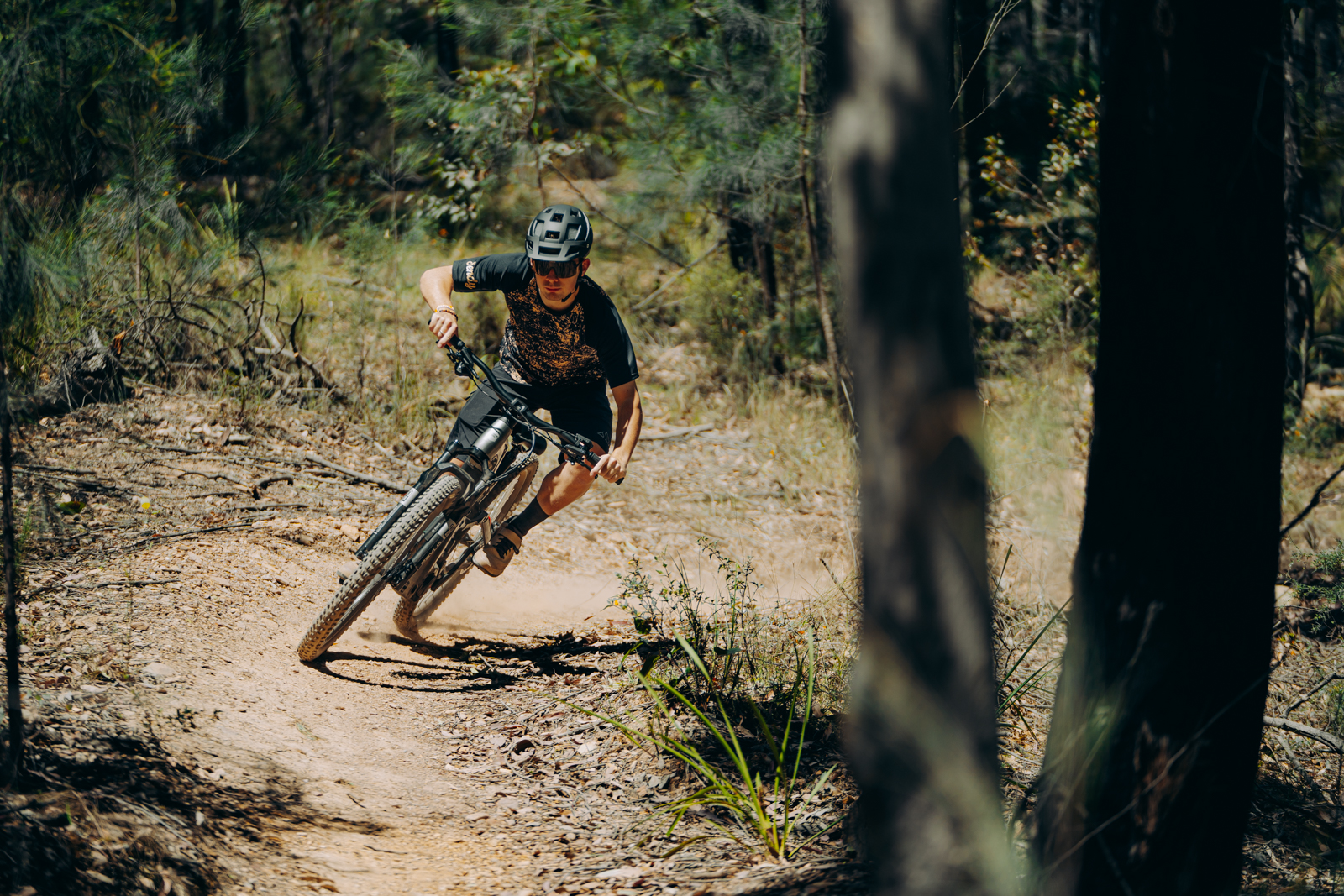TESTED: Pirelli Scorpion RACE Enduro and Downhill Mixed Terrain MTB tyres
Pirelli developed the Scorpion RACE tyres for one job - to win World Cups. While Hayden didn't manage that, he did put the DH and Enduro Mixed Terrain models through their paces.
Words: Hayden Wright | Photos: Gerard Lagana
Pirelli is a brand synonymous with performance in the motorsports world. From Formula 1 to the World Rally Championship, they strive to deliver nothing less than market leading tyres capable of winning above all else. Following the development and release of their Scorpion Enduro and Trail tyres, which prioritised wear life as much as grip, the decision was made to dive in and develop a range of tyres with the sole purpose of delivering World Cup wins at all costs.
Unashamedly wearing the word Race on their sidewall, there is no second guessing what these tyres are designed to do. While the tread pattern on the mixed terrain (M) tyres we have on test here does look quite similar to those previously tested, there are a host of changes to rubber compound, siping, casings and tread pattern to ensure this new tyre is ready for the podium. Slated as their most versatile tread pattern, I was curious to see if the new Race M line in both DH (downhill) and EN (enduro) casings offered increased traction and support over the Pirelli Enduro tyres I’ve previously tested.
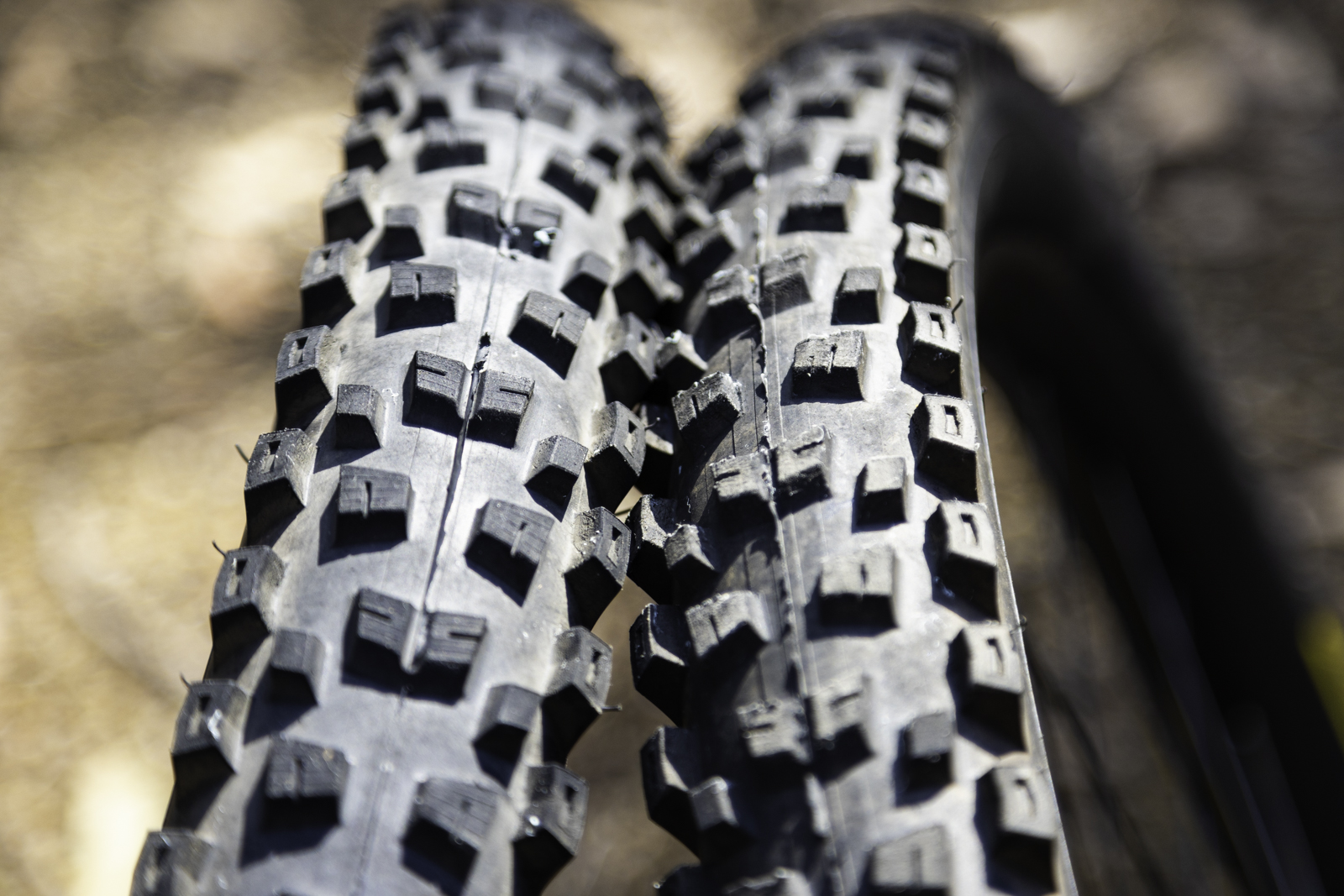
Casings on the Pirelli Scorpion RACE tyres
Serving as the foundation for the Race range of tyres are the all new DualWALL and DualWALL+ casing types. Designated to the EN and DH tyre variant respectively, both are comprised of a double ply carcass. A rubber insert has been sandwiched between these two layers to protect against pinch flats. The casings vary in materials, as the DualWALL (shown below) is made up of 120tpi (threads per inch) canvas while the DualWALL+ is made up of a 60tpi canvas. Typically, as the TPI increases, material becomes more supple and sensitive to pressure changes.
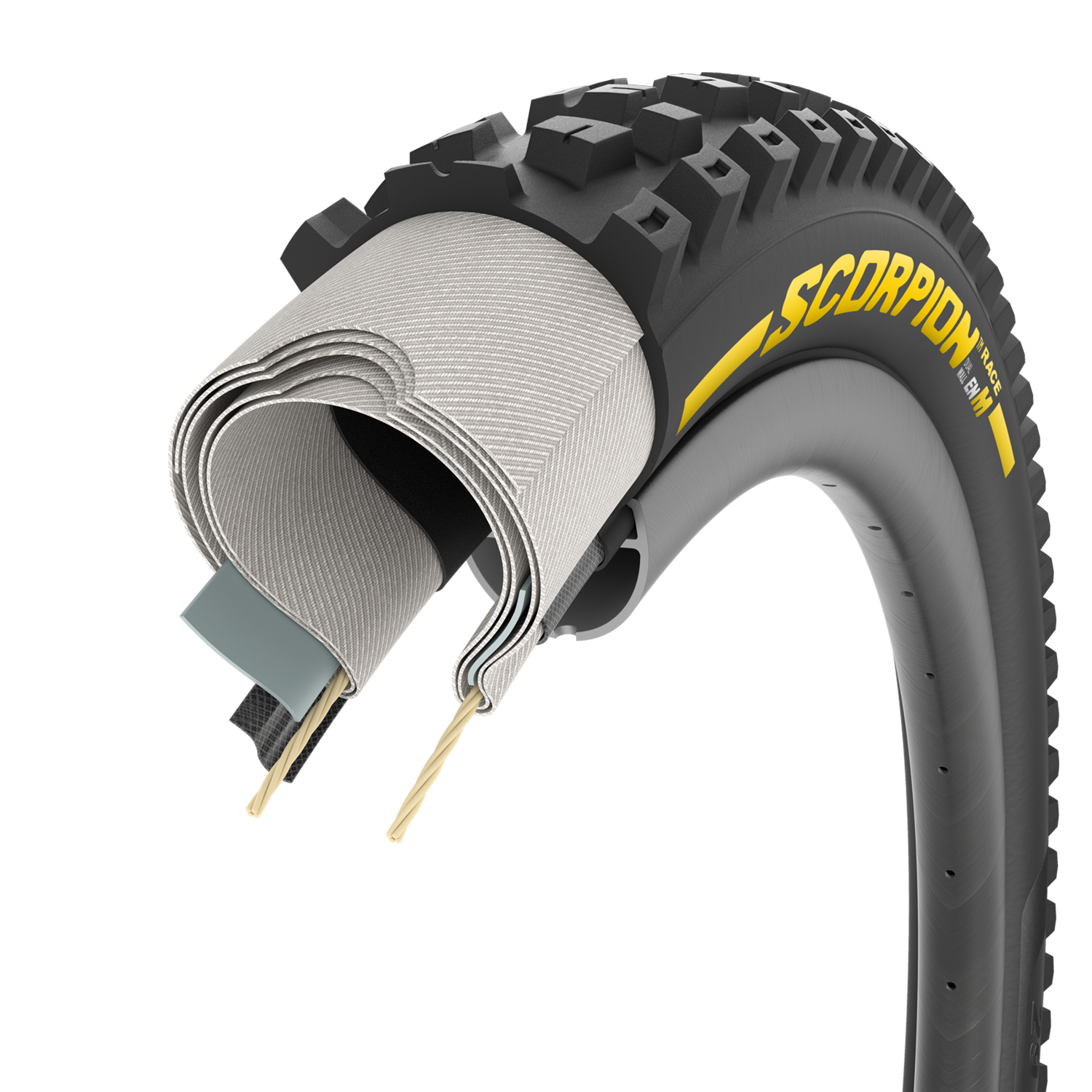
Conversely, as TPI decreases a tyre will become stiffer, more supportive and durable. To further increase sidewall stability, the DualWALL+ carcass (shown below) also features an additional textile sidewall reinforcement which spans from the bead to the beginning of the tread pattern itself.
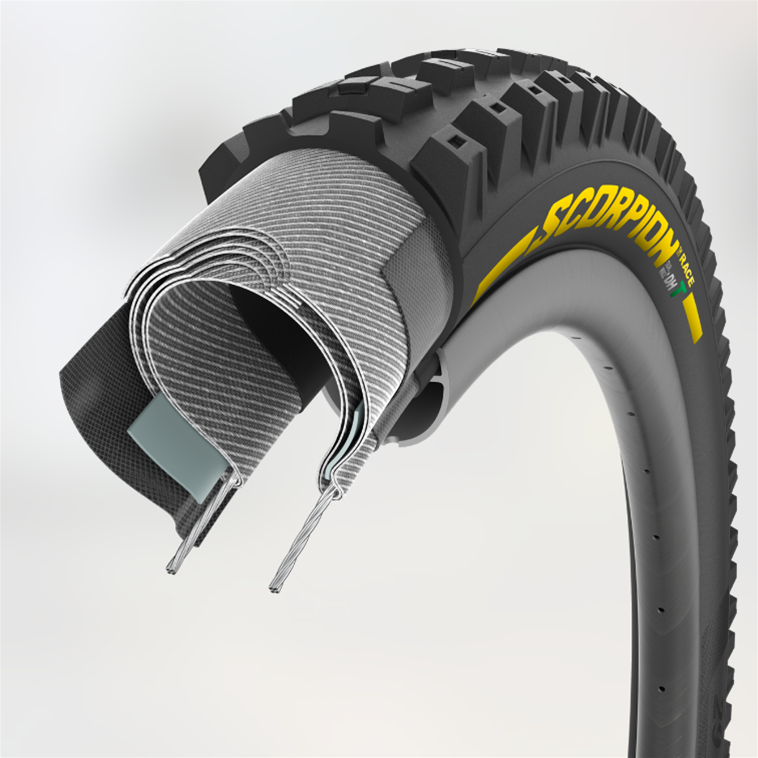
The 2.5” wide EN and DH casing tyres I had on test measured in at 2.55” when mounted up to a 29mm wide rim, which is well within acceptable tolerance. In the EN Casing 29” a tyre weighed 1308g, and in the DH Casing 1555g. The EN casing tyres run $135, or $130 for DH casings.
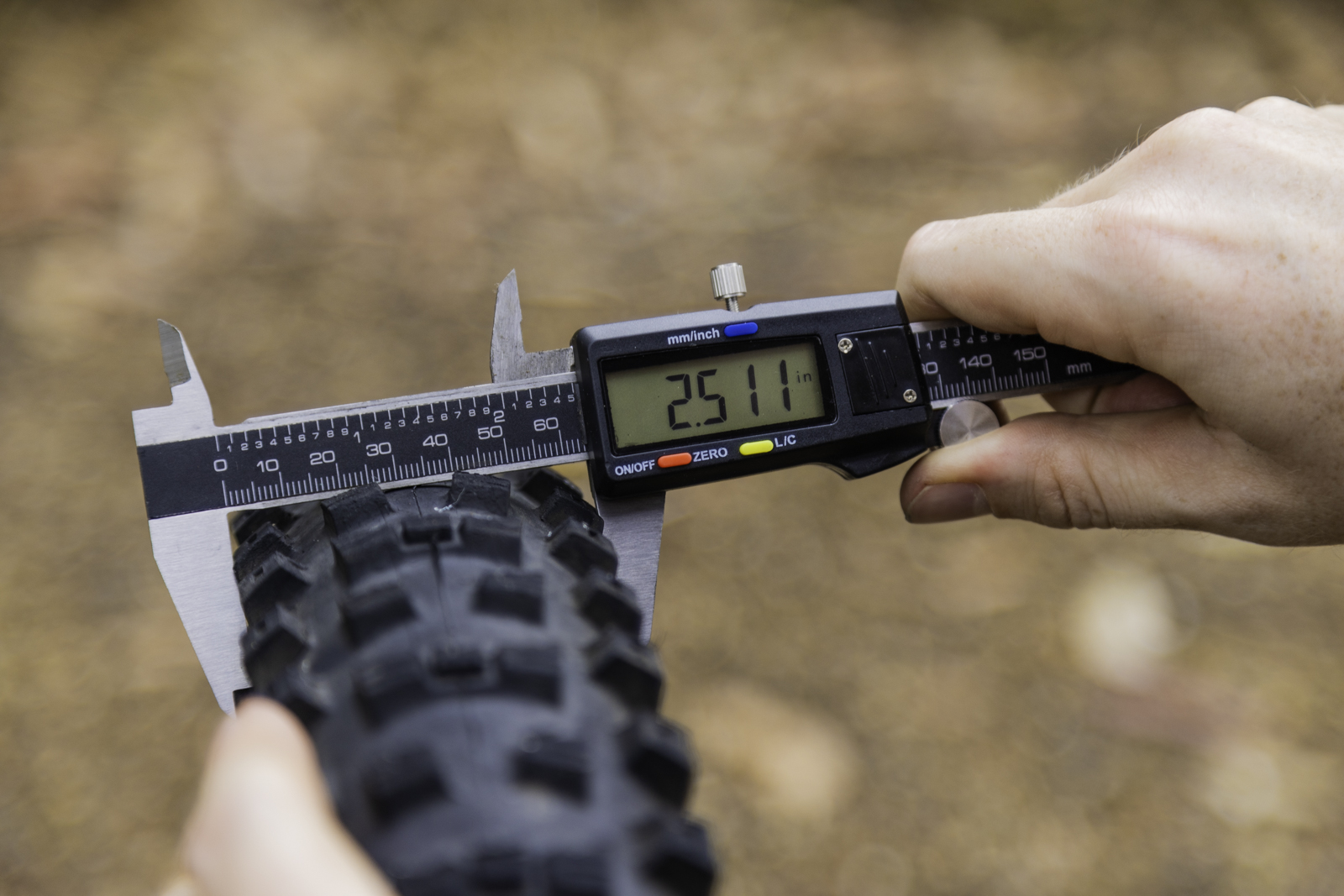
Tread Pattern
While many tread features have been carried across from the Enduro M to the Race M, there are some small but notable differences. Primarily, the corner knobs now have one deep sipe through the centre of the knob. This should encourage increased knob deflection in all directions, aiding in braking traction while at lean angle. Second, this corner knob is now one repeated pattern, rather than the alternating large-small pattern used on the Enduro M. Other minor changes can be seen in the siping and spacing of the centre knobs, which are now spaced further apart and have a slightly squarer, more aggressive profile in the pursuit of traction over a wider variety of terrain types.
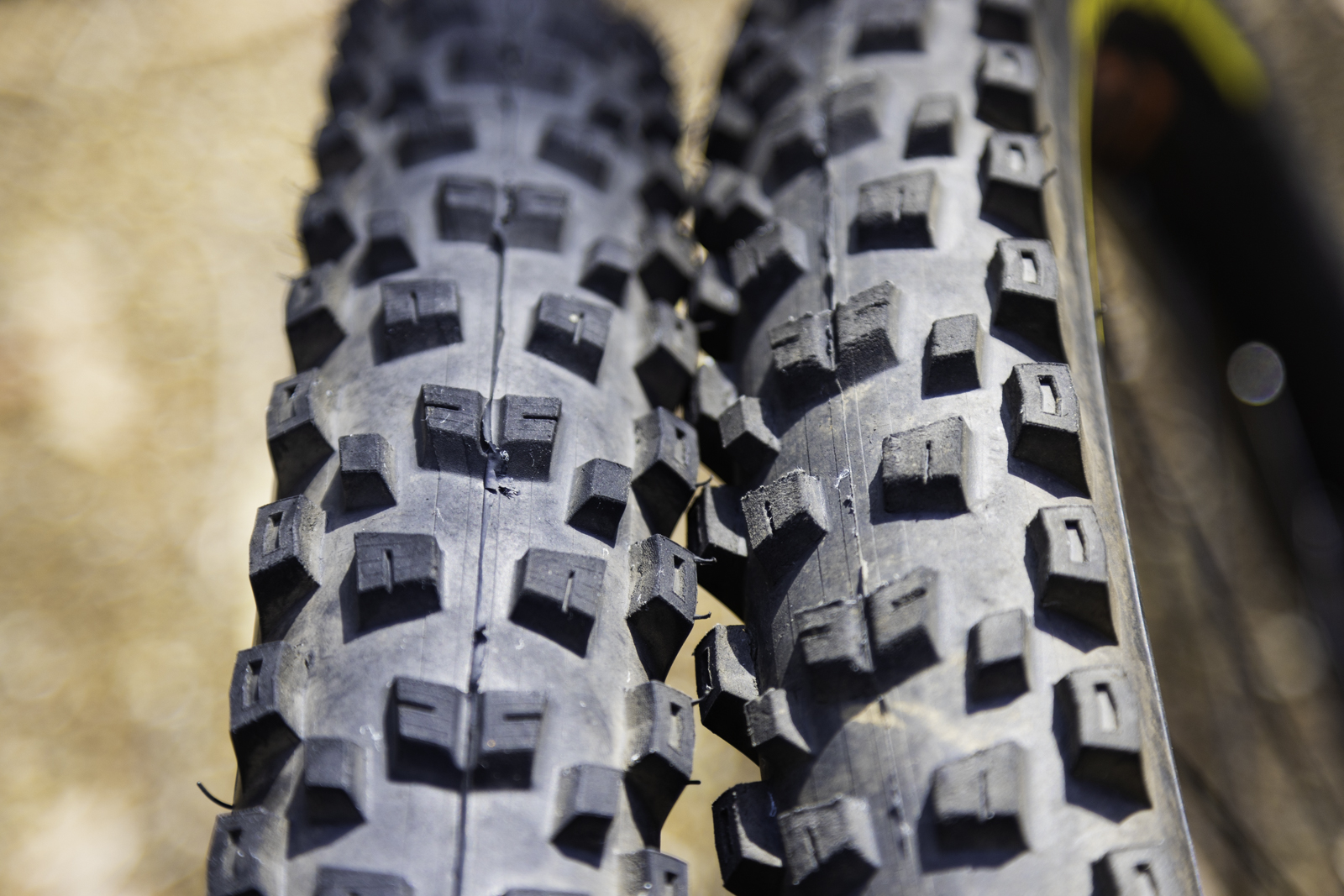
Rubber Compound
A common complaint with the Enduro range of tyres from Pirelli is their firm rubber compound. While it is very long lasting and durable, the Smart Grip Gravity compound is harder than some of the competition and can leave you wanting a little more traction particularly during aggressive riding. To remedy this, Pirelli have developed their new Smart Evo DH Compound which is present on the entire line of Race tyres. Some quick rubber hardness measurements between the two compounds had the new Smart Evo DH Compound coming in around 15% softer than the Smart Grip Gravity compound on my pocket durometer. The measured value was very similar to that from a MaxxGrip tyre from Maxxis, what many in Australia consider to be the gold standard for rubber softness on gravity tyres.
Setup
Over winter I rode the Scorpion Race M tyres in both EN and DH compounds across multiple wheel sets, and in multiple configurations as listed below:
Setup 01: Scorpion Race DH M (Rear), Scorpion Race EN M (Front)
Mounted to 29” We Are One Union Rims
Setup 02: Scorpion Race EN T (Rear), Scorpion Race EN M (Front)
Mounted to 27.5/29” Stans Flow EX3 Rims
Setup 03: Scorpion Race DH T (Rear), Scorpion Race DH M (Front)
Mounted to 27.5/29” Stans Flow EX3 Rims
Setup 04: Scorpion Race EN T (Rear), Scorpion Enduro HardWALL M (Front)
Mounted to 27.5/29” Stans Flow EX3 Rims
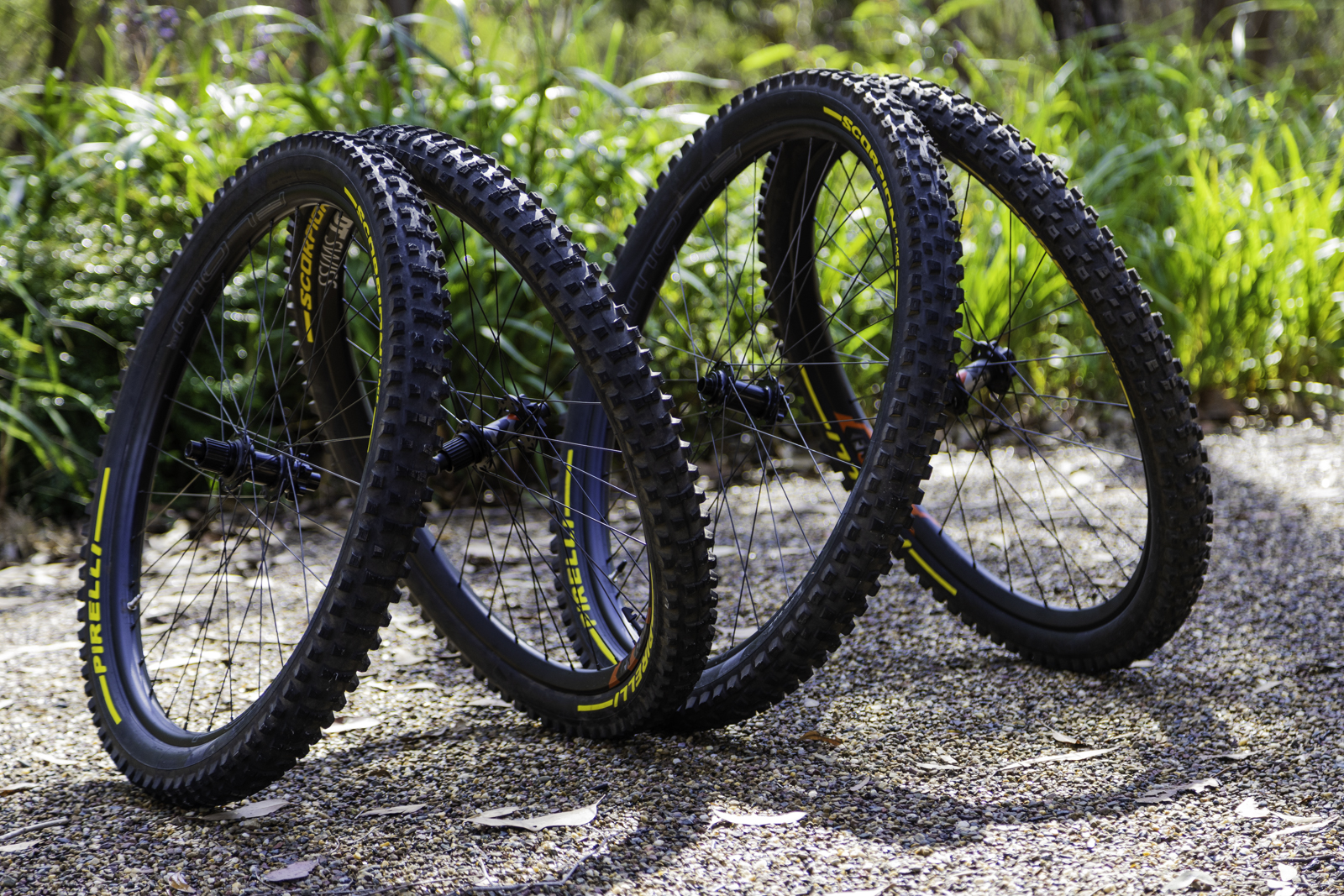
Mounting up the Scorpion Race M tyres required no more than a track pump and a single tyre lever, excluding the DH M when mounted to a 29'' We Are One Union Rim. In this case, I had to remove the valve core and use a compressor to get enough oomph to bead the tyre. Once mounted, I noticed very little drift in tyre pressures showing the bead/rim interface was sufficiently secure. Pressures varied from 18-23 psi in the front, and 22-26 psi in the rear with no burps, although I did start to get some noticeable sidewall folding on the rear with both casings when I went under 24psi.
On the trail
As with my previous testing, I instantly took to having the M tyres mounted both front and rear on my enduro bike. Having matching tread patterns makes for a very predictable riding experience, with no nasty surprises when adding lean angle on braking on steep sections. If both tyres are weighted evenly and you’re dialled in with your braking bias, what you get is a bike that performs in a manner that is calm and confidence inspiring. I typically ride hardpack and loose-over-hard, and found the performance of the tyre to be fairly consistent across dirt, rock and roots. Over the previious Scorpion Enduro M models I had more grip, more comfort and greater confidence attacking sections, knowing I was going to find the grip for the lines I wanted.

The M tyre is a jack of all trades, and on soft loam (which is rare in Queensland!) and on off cambers the M does find a lot of grip especially with the updated edge knobs. But I think there is room for a little bit more. I would prefer more bite from the corner knobs, particularly on the rear tyre – something offered by the Scorpion Race T I am reviewing currently.
When using the DualWall+ DH casing you end up with an extremely supportive tyre. This setup was capable of shrugging off anything I threw at it, riding with little care for my equipment all in the name of testing these tyres for you, our dear readers. This does come at a cost, with the 1550g weight being very noticeable when pedalling around on my enduro bike.
As such, I did tend to prefer running the EN casing as I found there to be sufficient support and protection from the 120tpi DualWALL casing. This casing is also marginally more supple on the bike, helping to absorb trail chatter rather than transmitting it through the bike and into your hands and feet.
I would only run the DH casing front and rear if you are exactly that, a DH racer. So if you typically automatically reach for DH rated casings but you don't race World Cup DH – I'd really suggest picking the EN DualWall casing for a better ride quality and more enjoyment on the trails.

A direct comparison of a Race EN M (front) to the Enduro HardWALL M (front) revealed an increase in traction, particularly on hardpack trails where the softer rubber compound bit into the dirt much more effectively with lots more predictable traction. I could push the bike harder and know the tyres were going to find grip.
I also noticed a decrease in small bump feedback through my hands with the RACE tyres, which can be attributed to the thicker but more supple sidewalls. In some back to back timed runs, the stopwatch told a similar story. Across a number of laps I was consistently around 2 seconds faster on the Race M in comparison to an Enduro M mounted up as a front tyre. These faster lap times do however come at a cost, with wear life being noticeably faster on the softer compound tyres then any other Pirelli tyre I have used previously. As the old saying goes, if they grip – they rip! The Pirelli Scorpion Race range are designed for racing, if you want a little more tread life, the Enduro range may serve you better.
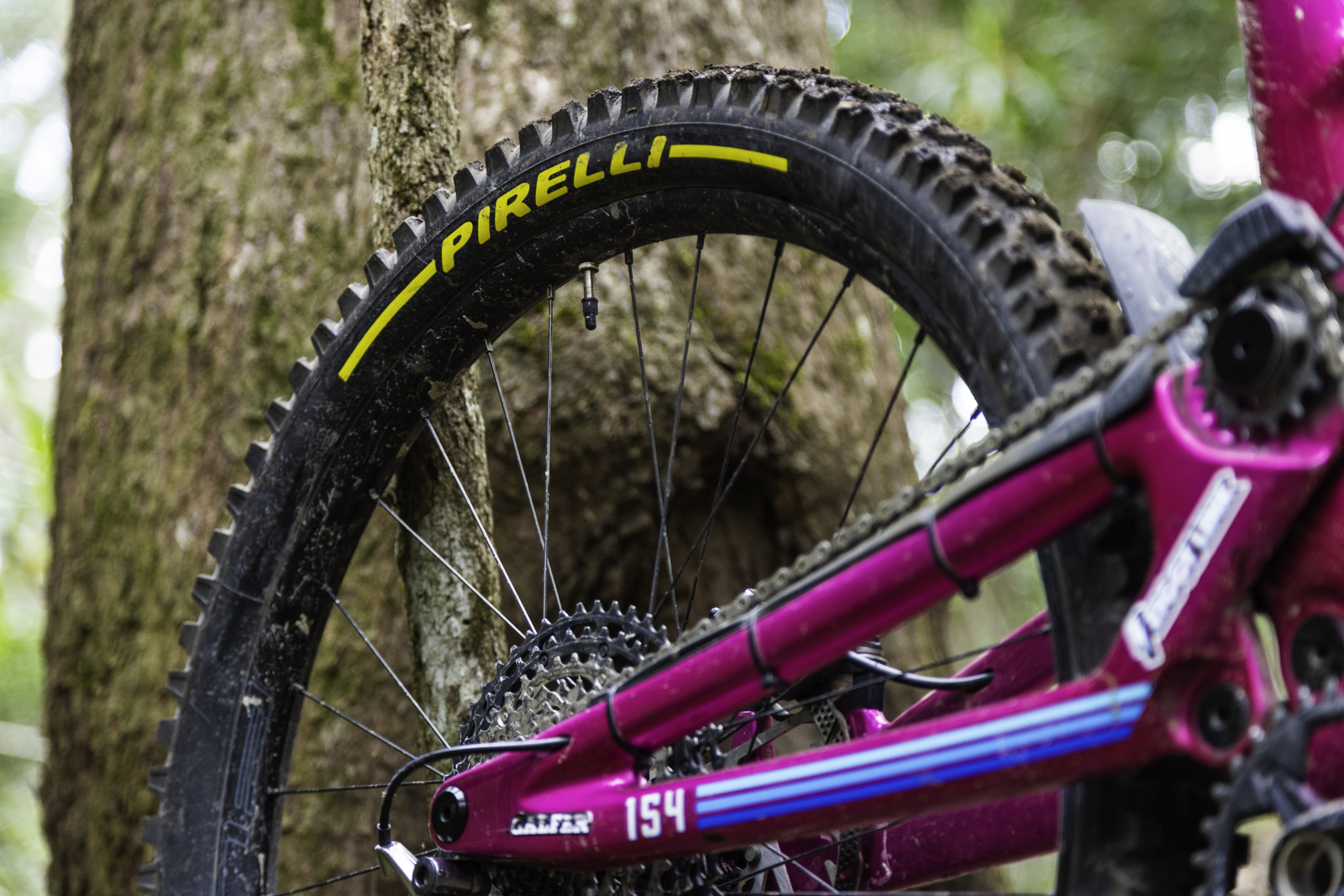
Verdict
By delivering consistent grip in a variety of trail conditions, supportive and durable casing offerings and a predictable tread pattern and profile Pirelli have created a tyre in the Race M which outperforms its predecessors and has a pier in the likes of a Maxxis Assegai.
Pirelli aimed to make a high performance gravity tyre with the Scorpion Race range, and they have nailed it. Riders looking for an all out performance tyre for Enduro or Downhill racing should consider this range and specifically the M tread if you want a versatile tread pattern to use for almost any conditions.
RRP: EN $135, DH $130
From: FEsports.com.au
Hits:
Consistent traction at lean angles
Predictable transition across the profile
Minimal rolling resistance given other factors
Durable and supportive casings
Misses:
Faster wear life compared to the Enduro range
